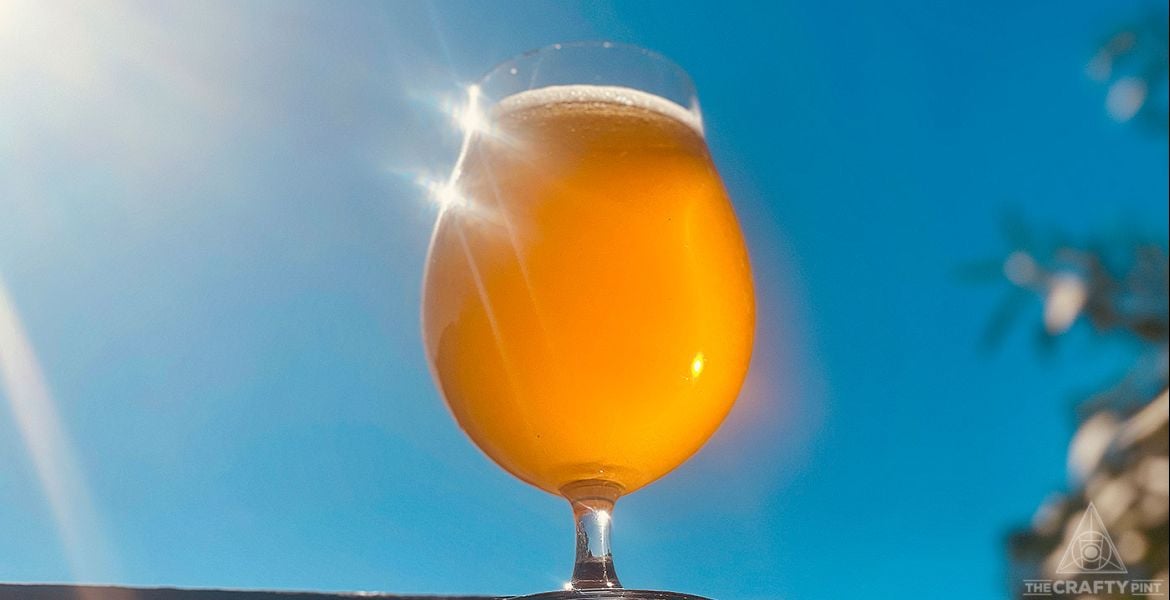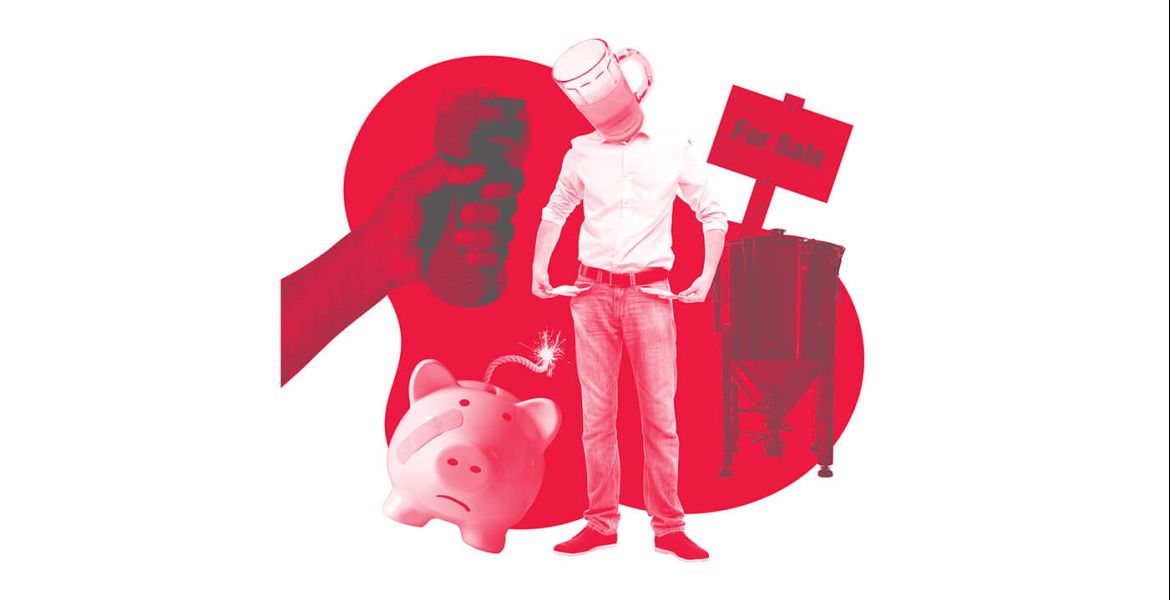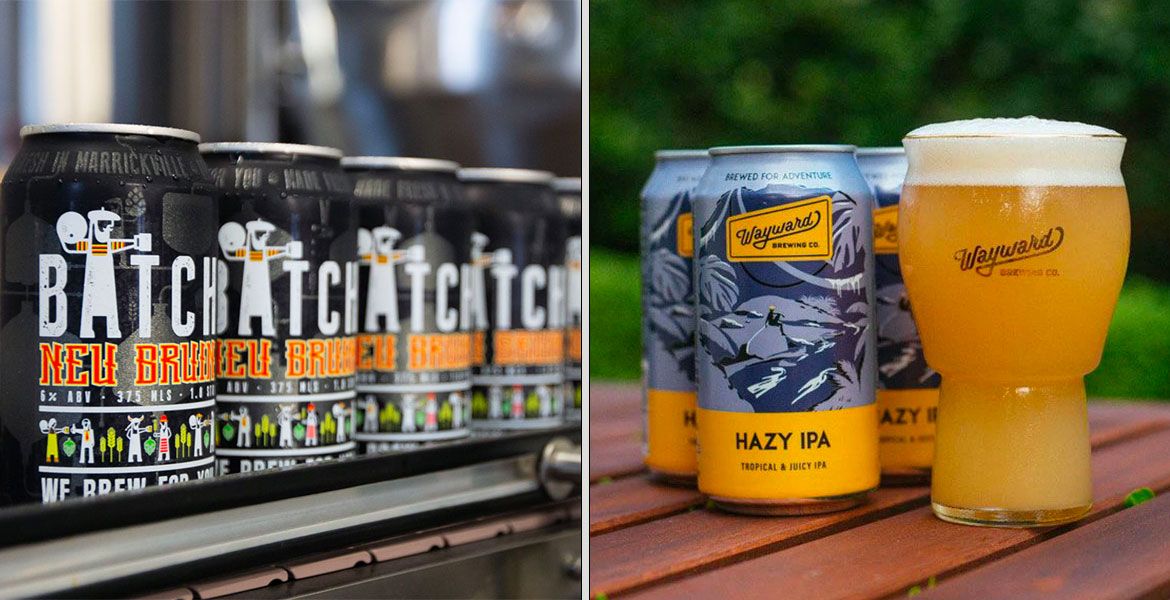If you'd asked people in the beer and hospo industries to name the factors that had hurt their businesses most since the pandemic started, there's every chance lockdowns, closed borders, and capacity restrictions would feature highly in any response. So, now we're eight months into a year in which all three are consigned to the past things should be rosy again, right?
If only.
The most common theme running through conversations with people across the beer industry – breweries, suppliers, retailers, hospitality – has been just how tough 2022 has been. For those on the East Coast who'd suffered through extended lockdowns in the second half of 2021, the hoped-for summer bonanza was wiped out by the arrival of omicron, which took out staff and customers alike, leading to a sort of faux-lockdown without any of the government assistance on offer for many during the official ones.
It's a situation that's lingered too, through autumn and into winter, which has always been the toughest time for the beer industry. People are heading out again, even if the consensus seems to be that it's not to the same level as pre-2020, and festivals have returned without necessarily selling as many tickets as in the past. Yet, as one rep put it to us recently: "It's fucking grim out there."
And by "out there" they – like countless other reps, brewers and venue owners we've spoken to over the past few months – are mainly referring to the off premise world. Having thrived during lockdowns, and supposedly recession-proof if the saying about people drinking to commiserate as well as celebrate is to be believed, it's the turn of bottleshops to be in the firing line.
Beer sales are down, with some retailers telling The Crafty Pint they're facing their harshest ever trading conditions in an economy that feels fundamentally different to any other year.
Ben Carwyn, owner of Carwyn Cellars, cites several factors that are impacting trade across the board. Specific to Melbourne is the long, cold winter that still shows no sign of shifting, but others apply across the board. COVID, flu and other illnesses continue to circulate, keeping potential costumers at home and exacerbating the staffing issues we examined last winter. Interest rates are rising, while barely a news cycle passes without reference to the cost of living crisis.

“Trade is really inconsistent,” Ben says. “Every shop I’ve spoken to is feeling a similar thing, where it’s 85 to 90 percent back to where it was [pre-COVID]. But these aren’t high margin businesses, so that last ten percent does really hurt retail.
“That extra five, ten or maybe 20 percent is all your profit margin.”
Ben says when it comes to the hospitality side of the business, although people are heading out again, patronage is unpredictable, which makes staffing the bar an even bigger challenge with a limited pool of workers. We've heard similar stories from major beer venues in other states; one Sydney owner talked about midweek nights when upwards of 300 would rock up only to be followed by a Saturday with a scheduled event for which the bar is practically empty.
“You just can’t pick it; you staff it thinking it will be busy and it’s dead," Ben says, "and you staff it for being dead and it’s busy.”
There are other factors at play too, from the trend towards healthier living, especially among younger people, that's helped fire the low and no-alcohol sector, as well as the return of international and interstate travel. And for those for whom pubs, gigs, live sport and restaurants were off-limits for chunks of the previous two years, there's a chance to make up for lost time, which is likely to be offset by less entertaining and drinking at home.
The last of these is one of the factors behind the recent downturn at Warners At The Bay (pictured below), according to bottleshop manager Nick Sim. The NSW bottleshop has been one of the country's retail pioneers when it comes to craft beer, servicing customers from across the wider region, but has not been immune to the challenges of 2022.
“We just don’t know what the new normal is going to be or if we’ll increase on pre-pandemic times,” Nick says.
“I’m not taking as much volume, so I used to be getting two or three cases and now I’m just getting one. It’s a lot slower now and I don’t want it sticking around.”
That said, despite all the factors potentially impacting people's buying decisions, he believes it's still hard to know what’s going on: winter is traditionally the slowest season for beer sales, Dry July has only just wrapped up, and there are people looking to redress the balance after overindulging during lockdown.

“If it was summer, I’d be concerned, but I’m not concerned yet,” Nick says.
“We’ll have to see what summer's like and then we’ll have some idea of whether to be scared or not.”
It's a feeling mirrored by Ben: “My gut feeling is that once we hit spring and summer, Melbourne will come back alive but right now it’s just hard."
A short drive from Warners is FogHorn Brewery in the heart of Newcastle, where founder and head brewer Shawn Sherlock is closing in on almost two decades in the brewing business. While their venue is returning to normal, they're still dealing with the lingering effects of last summer's omicron wave.
“We missed our Christmas and that really hurt the business. We need this trade to keep going for an extended period to help us recover from what was effectively a lost summer,” Shawn says, adding that they've experienced a dip in sales through bottleshops too.
“There’s still ordering but they aren’t ordering as much because the demand isn’t there,” he says.
Other brewers have told him they’re in a similar position, and he suspects there could be another factor at play that, unlike those related to COVID and the cost of living crisis, isn't out of the industry's control. Quite the opposite, in fact.
How much beer is too much beer?

Throughout the turbulence of the 2020s, there's still been an underlying sense of positivity surrounding craft, and indeed independent, beer. Overall beer consumption may be continuing on a long-term decline, but the percentage of the market claimed by craft style beers has continued to grow, and the Independent Brewers Association (IBA) has its sights set on hitting 15 percent for indie brewers by 2031.
When this site launched in 2010, plenty still dismissed craft beer as a fad destined to fade, yet as we approached 2020 the naysayers' mantra had changed: the industry had grown too fast, there were too many brewers, the market was becoming saturated, and there would be a rationalisation soon enough.
That rationalisation seemed destined to become a decimation when the nationwide shutdown of March 23, 2020, came around and was declared an existential threat to the industry. Instead, with fierce determination and swift adaptability on the one hand, government support and a trend towards keeping local alive on the other, hardly any brewing companies have folded, even if some have changed ownership structures, and more continue to open with every passing month.
At the same time, the trend towards "unlimited limiteds" has not just continued but been exacerbated by the pandemic. As drinking at home replaced going out, and people had more disposable income to spend at their local bottlo, so brewers responded by releasing even more new beers, often at higher price points, with higher ABVs, and in bigger cans – mostly 440ml but sometimes 500ml.
It was a fix for a while, but appears to have run its course. If you've got a growing number of brewers releasing more beers than ever and a beer-drinking population spending less on drinking at home then you've got an excess supply of items fewer people are demanding.
Little wonder that one brewery owner told The Crafty Pint they’d looked at their brewing schedule for the rest of the year and decided to cut many of the new beers they'd planned, or that many brewers are flooding their fans' inboxes with details of flash sales.
“During COVID, everybody moved to 440ml limited releases and they did really well," Ben says. "But now there’s a fuck-tonne of them around and people are basically bored of them.”
As such, he believes breweries need to get smarter about how they release such beers: rather than trying to get them into every bottleshop, instead limit what’s available. As with Nick at Warners, the Thornbury outfit has moved from buying ten cases of new releases from breweries they trust to just two or three.

Beyond that, Shawn believes the ongoing challenges in the wider economy mean brewers need to ask themselves if their business models still hold up, and believes those who focus on releasing really consistent beer will fare best.
“Maybe flooding the market with constant new releases at a high expense, while it’s been great, might start whittling away,” he says says. “I don’t think that sector is under dramatic challenge or is going to disappear, but I’d be surprised if what we've seen over the last few years of high cost, high value beer is going to be sustainable."
Few retailers sell more craft beer, and high value craft beer, than Beer Cartel. Co-founder Geoff Huens says they’ve still witnessed some growth this year, but sees a need for every business to work harder to get it, to make sure they’re taking on board lessons and adapting quickly.
“It does become a bit harder to chase that growth and you need to come up with more innovative ways to do it,” he says.
“It’s a very interesting time to be alive and running a business, particularly over the last few years.”
They're still experiencing plenty of appetite for new releases, but Geoff says the onus is on brewers to make sure each beer is cutting through – rather than hang their hats on the number of new beers they've released, they need to make sure each one hits the mark.
“What’s the value proposition we’re putting forward to our customers and does it resonate?" he says. "And if it doesn’t resonate then why not? And how can we change what we’re doing?”
It’s the economy, stupid

Strip away the individual contributing factors and there's no escaping the fact the current economic climate is unlike any pretty much every business owner in the craft beer industry has experienced. Even aside from the items dominating news bulletins – mortgages, fuel, lettuces going up, wages remaining stagnant – brewers are also factoring in the steepest rise in excise tax in three decades following last week's four percent hike.
“High-end craft beer is that luxury and it’s obviously going to be one of the first things cut out of a lot of people’s budgets,” is how Shawn puts it.
“The environment that a lot of people entered the industry in is changing. I’m not suggesting I have any answers anyone else doesn’t have, but I think we need to expect that the endless growth at the levels we had as an industry is no longer there.”
He might not have all the answers but is better placed than most to comment: before Shawn started brewing commercially with Murray's, he was an academic focused on Australia’s economic and labour history.
He points out that craft beer’s growth has taken place during a period of sustained prosperity in Australia, which survived the 2008 Global Financial Crisis relatively unscathed and went three decades without a recession until COVID came along.
“We had a record era of economic growth and low-interest rates, so money for financing breweries and their growth was cheap,” Shawn says.
“The rapid growth in the last five years, particularly in the three years leading up to COVID in our industry, was built on that real Field of Dreams where, if you could brew a half decent beer and open the doors, there was this view that there was this ever-growing ever-expanding industry.”
At the same time, craft beer consumers enjoying those sunny economic conditions have been more than willing to spend on something they love.
“Those consumers had a view that the economy was growing and they felt they had the spare income to spend,” Shawn says. “That’s tightening now and the capacity for our customers to keep spending at the levels they were spending is probably going to start to contract.
“We have to now get a bit smarter with how we target our beers, and the industry will need to look at this new world we’re in, reassess and come back.”
Geoff acknowledges the novelty of the situation from a retailer's perspective too.
“They used to always say gambling, tobacco and alcohol was recession proof, and I’ve read a lot that both argues for and against that idea,” he says.
“But it’s very hard to tell and one of the issues with the current situation is it’s something that many of us in the industry haven’t had to face before.”

What Lies Ahead?
While the hospo world has been hit harder than brewing when it comes to closures, there has still been notable change in 2022. In May, Redoak announced they were closing their long-running venue in Sydney's CBD, although said they plan to return with a new venue at their brewery. In Queensland, Catchment Brewing purchased Fortitude and offshoot label Noisy Minor in June, followed by Stalwart Brewing on the Sunshine Coast going into liquidation.
According to the Australian Financial Review, Tribe Breweries are searching for a buyer, and there's been a flurry of brewing companies – including some of the country's most established – launching equity crowdfunding campaigns. Meanwhile, Gippsland-based Bandolier Brewing recently decided to use their social media accounts to call for support from customers on the back of a winter that's been quieter and harder than the lockdowns of the past two years.
“There are some closures already starting to happen,” Shawn says. “I think there will be some movement in terms of ownership, business models and approaches. That’s to be expected, though, and that’s every sector of the economy, not just craft beer.”
With conditions likely to remain tough for some time, he believes breweries making quality beer that resonates have the best chance of survival.
“If people are going to spend extra money on a product, then it needs to be better and consistently better. If the product isn’t good, and you can’t produce good product consistently, then you can only last so long," he says.
“Our mission statement needs to be to get out of bed to make the best quality and most consistent beer we can, particularly when we’re asking people to spend the extra dollar when they don’t have it and the economy doesn’t have it.”
Yet even in the midst of a year that's been particularly brutal as a business owner, Shawn believes more growth lies ahead for what remains a young industry.
“I’m an optimist and always have been,” he says. “I don’t think we’ve hit that threshold of volume yet for craft.
"There’s still room for growth in craft at both the big end and the small end. I’m not one of those doom and gloom merchants saying there are too many people and the sky is falling in.
“The industry might look a little bit different but we’ll adjust to that new industry and growth will continue. I don’t think it will come back to those ten years leading up to COVID but I do think there’s still growth to be had.
“We have not topped out craft beer in Australia.”

















